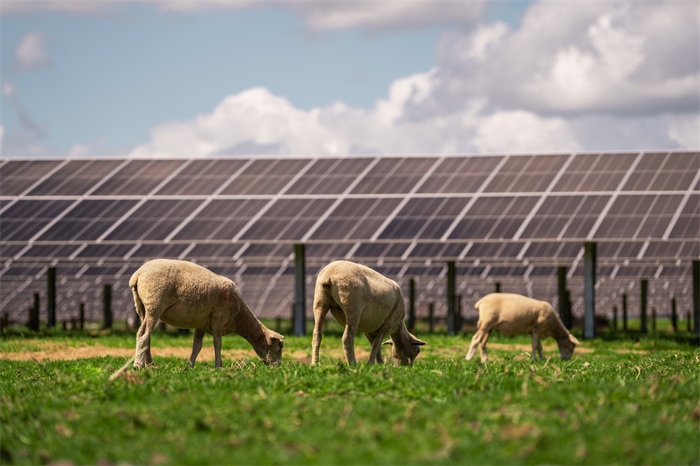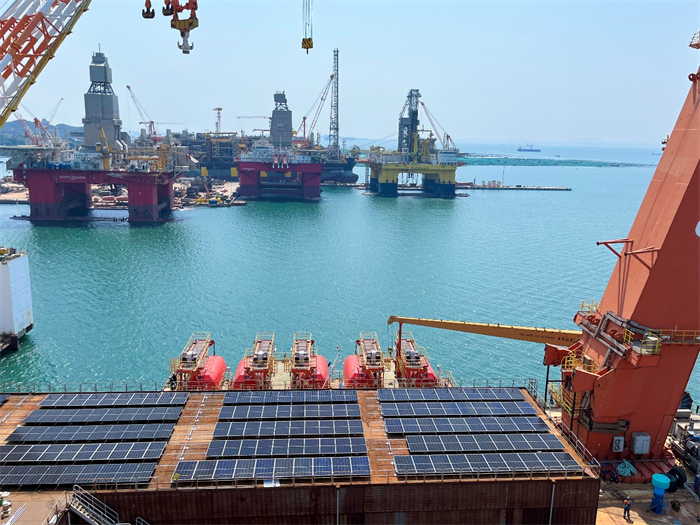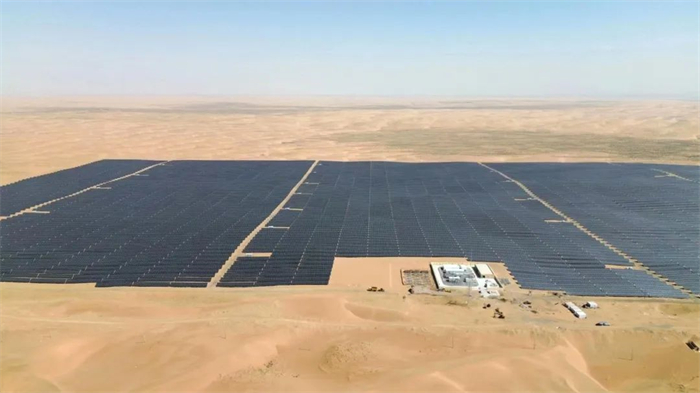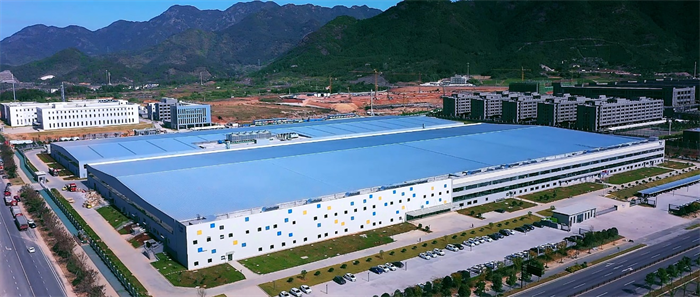With the approaching International Day for Biological Diversity on May 22, PV technology has once again garnered attention for its ability to reduce carbon emissions and restore ecological systems. As a global leader in smart PV and energy storage solutions, Trinasolar is at the forefront of addressing these issues.
For many years, Trinasolar has been actively promoting innovation, facilitating the transformation of new power systems for a net-zero future. Additionally, it has promoted the "PV + " model, which boosts economic benefits and biodiversity in greening agriculture, aquaculture, and more industries.
PV + Agriculture: empowering sustainable farming
The Kohirā Solar Farm Project, the largest solar farm in New Zealand to date, is an example of the successful coexistence of human development and natural ecosystems.
The solar farm is powered by Trinasolar Vertex Series modules and TrinaTracker Vanguard 2P trackers, a perfect match for New Zealand, an agricultural powerhouse. There is plenty of room between the rows of modules, allowing agricultural operations to continue unimpeded, thanks to the 2-meter-tall trackers.
The carefully thought-out PV solution ensures that crop cultivation and grazing are not impacted while protecting farmland. Grazing helps control vegetation growth and provides organic fertilizer for the soil. The ingenious integration of PV solar achieves multiple uses of the land while maintaining ecological balance. Additionally, it is anticipated to produce 55 GWh of electricity annually, greatly aiding New Zealand's renewable energy goals.

Caption: The Kohirā Solar Farm Project powered by Trinasolar Vertex Series modules and TrinaTracker Vanguard 2P trackers
The 100MW PV project in Wanning, Hainan province, China is another excellent illustration of the "PV + Agriculture" concept. The project uses Vertex N 700W series modules from Trinasolar and will produce up to 133 GWh of electricity yearly, providing local residents and industries with a consistent supply of green electricity, effectively reducing the use of traditional fossil fuels.
Given that Hainan has one of the highest biodiversity levels in the world, agricultural practices there must pay special attention to ecological preservation. Trinasolar's PV solution allows crop cultivation to proceed as usual while providing a better-growing environment by regulating temperature and light. Furthermore, the green electricity produced supports greenhouse operations, lowering costs and carbon emissions even more.
This model of sustainable agriculture is rapidly unfolding in Wanning, Hainan. The project plans to construct 33 hectares of vegetable greenhouses, helping to boost the incomes of nearby farmers by creating about 100 jobs.
Offshore PV: protecting marine biodiversity
Offshore PV is one of the promising application scenarios in the PV industry. Trinasolar's Vertex modules received the first offshore PV certification globally from TÜV Rheinland last May, which is a significant milestone for offshore PV applications.
Compared to onshore PV, offshore PV uses a lot more materials. Vertex N 700W+ modules are ideally suited for offshore settings, with improved BOS and high reliability. This creates a balance between ecology and development that protects marine biodiversity.

Caption: Trina Solar's Vertex modules used in the CIMC offshore floating demonstration base in Yantai, Shandong province, China.
The PV project in Taishan, Guangdong gives local fishermen a route to financial success by producing electricity above the sea surface and farming fish underwater.
PV projects in desert: restoring greenery
In desert, Gobi, and barren regions, PV has a significant advantage in preventing wind erosion, stabilizing vegetation, and stopping sandstorms. Standing tall over the vast desert in Alxa League, Inner Mongolia, the 100MW Ulan Buh Desert Management, Energy Storage, and PV Project showcases the remarkable results of PV-enabled sand treatment.

The project consists entirely of Trinasolar Vertex series bifacial dual-glass modules. To anchor the sand against wind, 1x1 meter grass squares were planted between and around the PV arrays. Plant survival rates are greatly increased in the sheltered habitat beneath the panels, opening up new opportunities for ecological restoration. This formerly deserted area has been transformed by PV into a clean energy base and oasis.
Sustainability in Trinasolar's DNA
Beyond being a crucial value that the company provides to its customers, sustainability has long been ingrained in Trinasolar's organizational DNA.
Trinasolar prioritizes green management in the entire production and operation process. Several of its production facilities have been awarded the title of "Green Factory", and its Yiwu facility is the first in the PV industry to be certified as a "Zero Carbon Factory" by an independent agency.

Caption: Trinasolar's Yiwu facility, the first in the PV industry to be certified as a "Zero Carbon Factory" by an independent agency
Trinasolar further demonstrates its commitment to sustainability with leading products: the Vertex and Vertex N series modules have received Environmental Product Declaration (EPD) certification as well as EPD Italy certification, and the Vertex N series modules have received Carbon Footprint of Products (CFP) certification.
While the PV sector plays a critical role in reducing carbon emissions and preserving biodiversity by tackling the root causes, the "PV + " model perfectly embodies this and opens up new avenues for ecological management. In response to the International Day for Biological Diversity's call to "Be part of the Plan", Trinasolar, a devoted supporter of global sustainability initiatives, will continue to step up its efforts in product and model innovation going forward.
